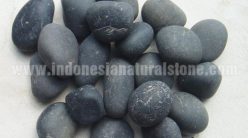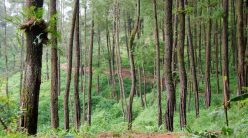Did you know that the porang plant is currently on the rise in Indonesia?. Especially because this plant brings big profit, until billions of rupiah. Porang or iles usually grow wild in tropical forests with an average height of about 1.5 meters. To grow, porang plants need shade so that they can be cultivated as intercrops in community forests or plantation forests. Grow single with green and white stripes on the stem. One of the benefits is that the porang plant is a natural ingredient in the manufacture of glue and jelly by overseas factories such as Japan. Porang tubers contain glucomannan or substances in the form of complex sugars and soluble fiber derived from plant root extracts. Exported abroad for the needs of industry, health and food. Porang can be an alternative food besides rice. In addition, porang tubers have also been proven to be used as raw materials for cosmetics, medicines, and industrial raw materials.
Maintain porang plants is not difficult. It can grow well in various types of soil media, and only by using manure. This porang tuber is also known as snake food, because it is easily found in the forest. Porang plants need other plants to grow, need to pay attention to the level the density of the plant that is the host or the place where the porang plant takes shelter. The shade density of this porang tree must be at least 40 percent. The types of plants that are good for sheltering porang plants are mahogany, teak, and sono.
But now, buying porang seedlings is not as easy as it used to be, because many people already know the economic value of these porang tuber seeds. Having the Latin name, amorphopallus muelleri, porang is usually used by processing it into flour, and then it can be used as raw material for cosmetics, glue, Shirataki noodles and many more.
The harvest period for porang is indeed quite long, reaching 1 year. However, this is not something to worry about, because when it is harvested, the yield of porang can reach 300 million rupiah for 1 hectare of garden. Whereas the capital for 1 hectare of garden together with the seeds is 50-60 million rupiah. Pretty fantastic numbers, right?
–sh





